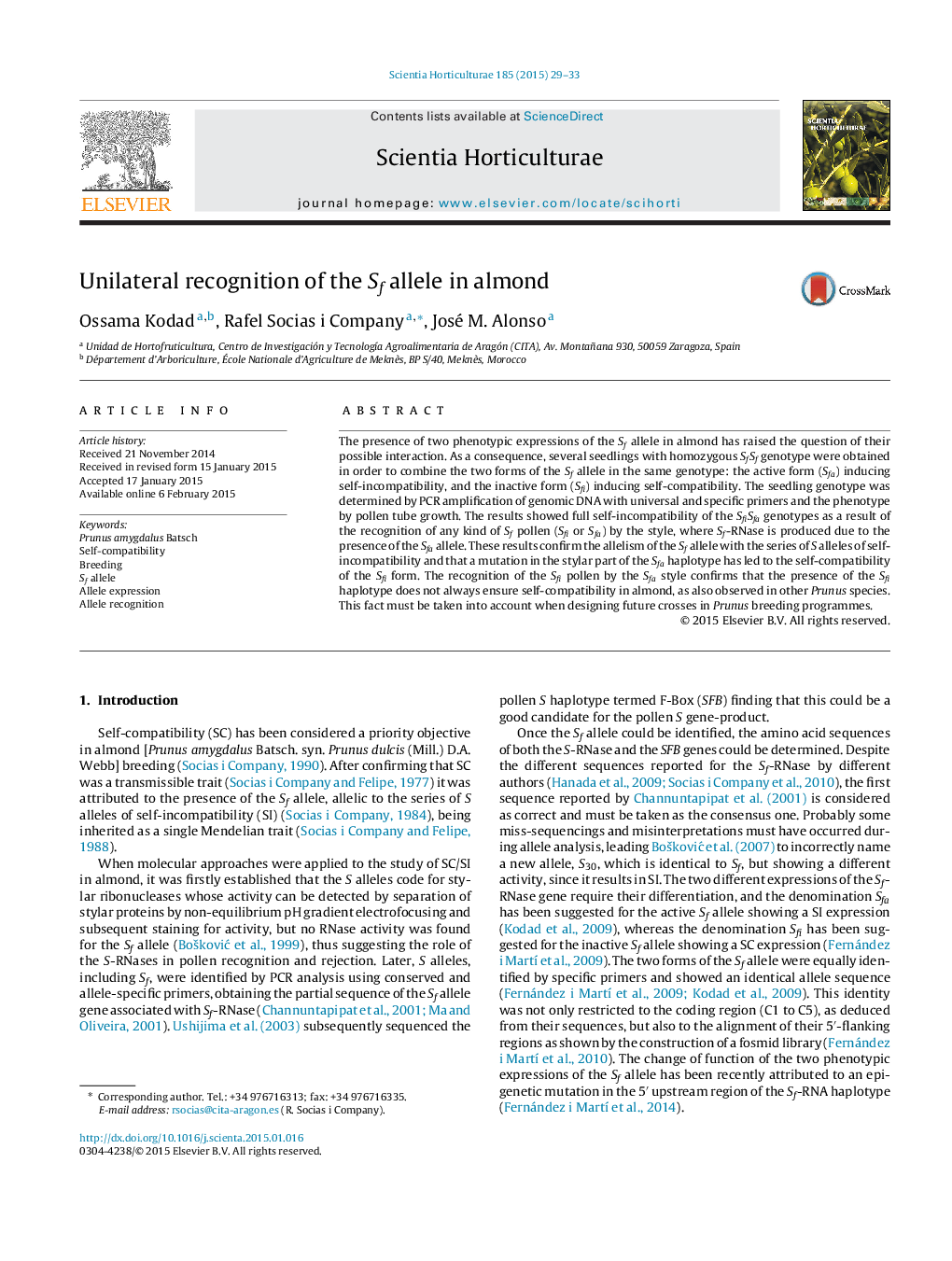| Article ID | Journal | Published Year | Pages | File Type |
|---|---|---|---|---|
| 4566489 | Scientia Horticulturae | 2015 | 5 Pages |
•Almond self-compatibility allele shows two phenotypic expressions.•Sfi confers self-compatibility and Sfa self-incompatibility.•Sfa pistils are able to recognise Sfi pollen, but Sfi pistils do not recognise Sfa pollen.•The joint presence of the two forms of the Sf allele results in self-incompatibility.
The presence of two phenotypic expressions of the Sf allele in almond has raised the question of their possible interaction. As a consequence, several seedlings with homozygous SfSf genotype were obtained in order to combine the two forms of the Sf allele in the same genotype: the active form (Sfa) inducing self-incompatibility, and the inactive form (Sfi) inducing self-compatibility. The seedling genotype was determined by PCR amplification of genomic DNA with universal and specific primers and the phenotype by pollen tube growth. The results showed full self-incompatibility of the SfiSfa genotypes as a result of the recognition of any kind of Sf pollen (Sfi or Sfa) by the style, where Sf-RNase is produced due to the presence of the Sfa allele. These results confirm the allelism of the Sf allele with the series of S alleles of self-incompatibility and that a mutation in the stylar part of the Sfa haplotype has led to the self-compatibility of the Sfi form. The recognition of the Sfi pollen by the Sfa style confirms that the presence of the Sfi haplotype does not always ensure self-compatibility in almond, as also observed in other Prunus species. This fact must be taken into account when designing future crosses in Prunus breeding programmes.
